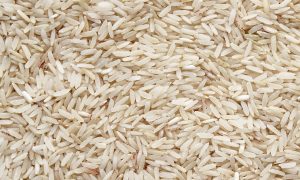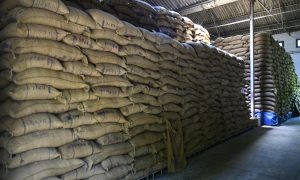Why is growing rice becoming a challenge with each passing year

India being one of the major players in the world rice markets can’t remain untouched with the weather and other challenges that the crop faces every year
Recently, The Economist had a piece on the crisis engulfing rice production worldwide including in India, where it is one of the main staple food items consumed by a sizable chunk of the population.
The crisis at least for India, according to the article, is mainly due to erratic monsoon, falling water tables in main growing regions, excessive exploitation of soil, etc. Add to this the rising demand mainly as a feedstock for grain-based distillation, volatile prices, etc.
All these are combined together to give rice production a sense of uncertainty and risk usually not associated with the crop.
And India being one of the major players in the world rice markets can’t remain untouched with the weather and other challenges that the crop faces every year.
In India, rice is usually cultivated in around 44-45 million hectares of land both in the kharif and rabi seasons (the bulk in the kharif season) and occupies around 22-23 per cent of the gross cropped area per year.
The crop is grown in almost all parts of the country and the annual average production varies between 110-120 million tonnes per year.
It is also exported majorly and in FY23 despite a ban on exports, India might end up exporting around 17 million tonnes of non-basmati rice added to the 4.5 million tonnes of basmati rice.
“The exports growth has slowed due to the ban and import duty levied few months back,” said Vinod Kaul, executive director of All India Rice Exporters Association.
Being a crop that is heavily dependent on the southwest monsoon mostly in eastern and southern parts of the country, rice every year faces multiple challenges.
Any setback to the southwest monsoon has a very negative impact on the crop’s production mainly in those zones where irrigation facilities are limited and scant.
Poor rainfall pushes the cost of production of paddy up for the farmers and has a direct impact on per hectare income.
Though a sizable chunk of the paddy is procured by state agencies for distribution through public distribution programmes, the process of purchase is skewed in favour of a few states and regions.
However, off-late there has been a significant rise in the number of states from where Central government agencies procure rice for the central pool and states like Chhattisgarh, Telangana and Jharkhand have become the new rice bowls of India leaving Punjab and Haryana behind.
The challenge that the crop faces from uneven weather patterns and increasing impact of climate change can be addressed to some extent through modern farming techniques such as direct-seeded rice (DSR).
Rice and GHGs
Paddy farming has long been established as one of the major contributors to Greenhouse Gas Emissions (GHGs).
Among the various techniques propagated by scientists to check the emission of GHGs from paddy, DSR is among the most common.
In DSR, rice seedlings are directly planted into the soil either manually or through machines, thus doing away with the requirement of first growing the plant in nurseries and then transplanting them into the fields both of which have to be done in fully watered conditions.
However, despite being in vogue for several years, DSR hasn’t really picked up in major growing regions of India and one complaint of many farmers is rice grown through DSR technique is that yields are sometimes lower than the traditional process of transplanting and also the crop is more prone to pests and insects as compared to usual method.”
“DSR is a good way forward as it requires less water, the soil quality is retained, saves irrigation but the downside is that it makes the plant vulnerable to pest and weed attacks and increases the cost of plant chemicals for the farmers. Also, though DSR has been in practice for several years across India, its adaptation among farmers is very low. In the last few years, area under DSR rice could have gone up due to COVID and impending labour shortage but then I suppose it has gone back,” Avinash Kishore a senior Research Fellow in the New Delhi Office of the International Food Policy Research Institute (IFPRI) told Business Standard.
In Punjab, which is one of the premier rice-growing states, around 0.6 million hectares has been brought under DSR rice in the kharif season a few years back, which was among the highest so far, but just a fraction of the around 2.8 million hectares where paddy was grown in the state.
Similarly, in neighboring Haryana, the state government has been giving an incentive to farmers to shift from traditional puddling methods to DSR, but the progress has been slow.
According to a news report by the Press Trust of India (PTI) a few years back, studies have shown that rice farming across the world could be responsible for up to twice the level of climate impact relative to what was previously estimated.
The study which was conducted in India and published in Proceedings of the National Academy of Sciences (PNAS) found that intermittently flooded rice farms can emit 45 times more nitrous oxide as compared to the maximum from continuously flooded farms that predominantly emit methane, the PTI report said.
PNAS is the official journal of the National Academy of Sciences (NAS) and is an authoritative source of high-impact, original research that broadly spans the biological, physical, and social sciences.
The researchers investigated greenhouse gas emissions from rice farms across southern India. They found that nitrous oxide emissions from rice can contribute up to 99 per cent of the total climate impact of rice cultivation at a variety of intermittently flooded farms.
“These emissions contributed substantially to global warming pollution — far more than the estimate of 10 per cent previously suggested by multiple global rice research organisations,” the report said, quoting researchers who have worked on the study.
Studies show that growing rice is also resource-intensive. Rice cultivation covers 11 per cent of the Earth’s arable land and consumes one-third of irrigation water.
DSR Rice and Research
It is here that the role of research bodies, companies, and scientific institutions becomes crucial: to develop DSR rice varieties that do not lead to excessive use of plant chemicals while at the same retain the beneficial qualities of normal rice and consume less water.
For the last few years, scientists at the Manila-based International Rice Research Institute (IRRI) are working on a cross-country project in India to develop and commercialise DSR rice varieties, which not only give higher yields as compared to the traditional puddling method but are also resistant to pests’ attacks.
The varieties being tested in various agro-climatic zones across Asia not only germinate quickly in extremely dry conditions but also give a yield of around 4-5.5 tonnes per hectare.
And, if the same variety is grown through puddling, the yield level goes up even further to almost 7 tonnes per hectare, the researchers claim.
The cross-country trials are being conducted across 29 sites in Asia and Africa including India. In India, the first trials are currently close to harvest in states like Delhi, Uttar Pradesh, Bihar, and Odisha.
Global agriculture companies like Bayer are also developing DSR seeds that carry all the goodness of normal rice and are not overtly susceptible to pests.















